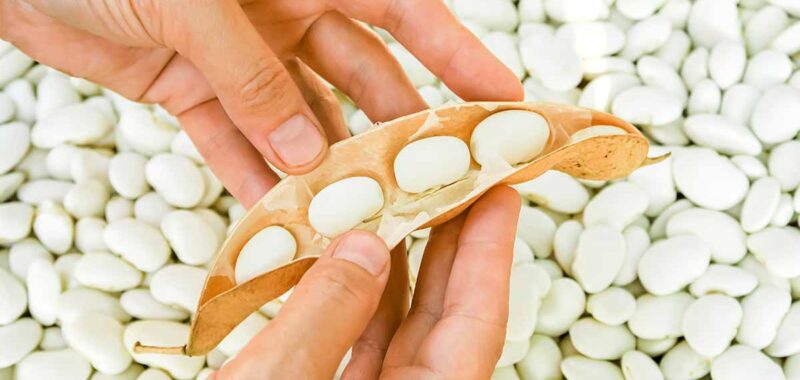Apart from aphids, seedlings may be attacked by cutworms or larvae of the bean seed fly (Delia platura).
Disease
Rotating your crops, providing adequate moisture, and growing in full sun will go a long way toward avoiding any diseases.
Here are a couple of very common issues you may encounter:
Botrytis
Botrytis is a fungal disease caused by Botrytis fabae or B. cinerea. It’s also called gray mold and in cool, humid conditions it can rapidly get out of control.
As the name suggests, it shows up as gray fungal spores all over your plants.
If you cut open a stem, you’ll find white fruiting bodies, and the seeds will develop sunken brown areas. When infected, the flowers may abort and the seeds might rot.
It’s important to start treating the moment you notice symptoms.
There are lots of options, including products that contain Streptomyces lydicus WYEC 108, copper, Ulocladium oudemansii (U3 strain), or citric acid.


Procidic Fungicide
Arbico Organics carries a product called Procidic, which harnesses the power of citric acid to kill pathogens like botrytis.
Rust
Rust causes a reddish-brown fungal growth on plants.
It’s caused by the fungi Uromyces phaseoli typica and U. appendiculatus, both of which prefer lots of humidity and warm air to thrive.
The disease starts out with small, raised white spots on the leaves, pods, and stems.
These tiny spots erupt and that’s when the rusty brown fungal growth starts to expand. Sometimes the spots will have a yellow halo, but not always.
Over time, the leaves might turn yellow or black and they might die. As the leaves die, the yields are reduced. A heavily infested plant might die entirely.
You can treat rust using products that contain the beneficial bacteria Bacillus subtilis.


CEASE Biofungicide
CEASE is an excellent product, and it’s available at Arbico Organics.
Harvesting
Depending on the variety, your navy beans should be plump and ready to harvest between 85 and 100 days after sowing.


When the pods dry and turn brown, the seeds inside should feel firm. If you give the pods a little shake, they should rattle slightly and they might even have started to split open.
To harvest, use a pair of scissors or pruners and snip the pod of the branch. Don’t pull them off by hand unless you plan to rip out or cut down the entire plant.

